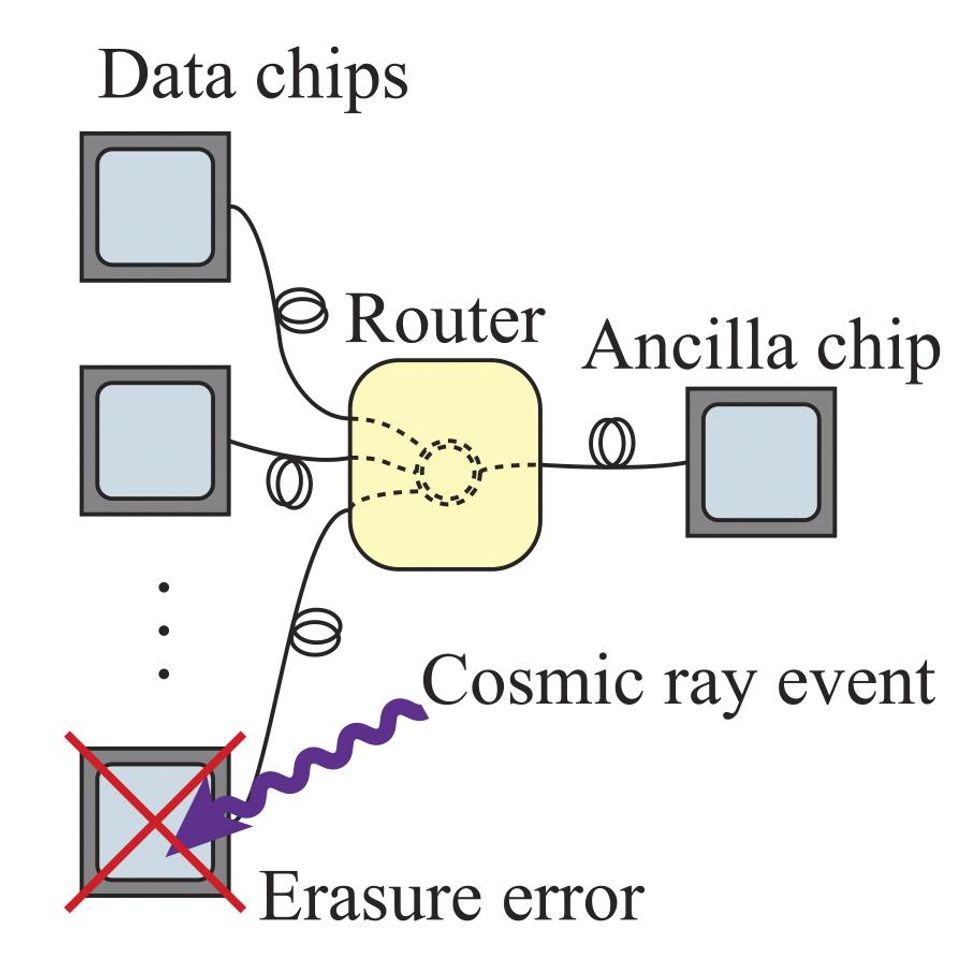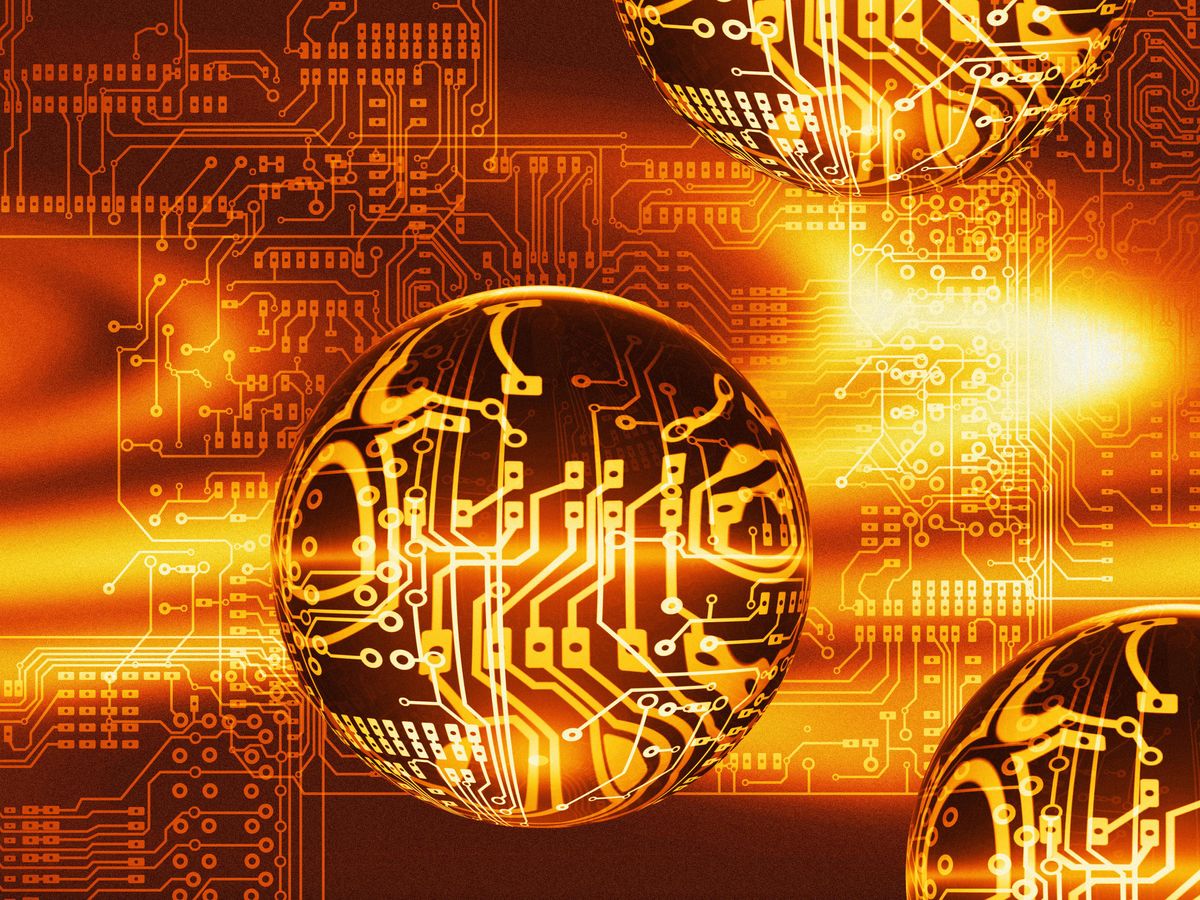The kind of quantum computers that IBM, Google and Amazon are building suffer catastrophic errors roughly once every 10 seconds due to cosmic rays from outer space. Now a new study reveals a way to reduce this error rate by nearly a half-million-fold to less than once per month.
Quantum computers theoretically can find answers to problems no regular computer might ever hope to solve. Their key ingredients, known as quantum bits, or qubits, are linked together by a quantum effect known as entanglement.
The quantum effects that quantum computers depend on are extraordinarily vulnerable to disruption from their surroundings. This fragility typically leads present-day state-of-the-art quantum computers to suffer roughly one error every 1,000 operations. However, many practical applications for quantum computing demand error rates lower by a billion times or more.
Quantum physicists often hope to compensate for these high error rates by spreading quantum information across many redundant qubits. This would help quantum computers detect and correct errors, so that a cluster of many “physical qubits,” the error-ridden kinds that researchers have developed to date, can make up one useful “logical qubit.”
Google, IBM and others aim to develop such fault-tolerant quantum computers using superconducting circuits as qubits. This is because such hardware is potentially scalable to many thousands of physical qubits in the near future.
However, a 2021 study from Google scientists and their colleagues revealed these superconducting circuits are vulnerable to errors from cosmic rays from deep space. These particles strike our planet from every direction with gargantuan amounts of energy, surpassing anything the most powerful atom smashers on Earth can produce.
Conventional quantum error correction codes usually deal with noise that disrupts a single or a few qubits at once. However, cosmic rays can disrupt all the qubits in a chip at once. “Cosmic ray events therefore overwhelm the limited capacity of conventional quantum error correction codes,” says study lead author Qian Xu, a quantum physicist at the University of Chicago.
A cosmic ray strike can essentially erase all the quantum information encoded on a quantum processor. In addition, quantum computers based on superconducting circuits may experience such catastrophic failures every 10 seconds on average, which is especially detrimental to long quantum computing tasks that might take several hours. Moreover, cosmic rays can disrupt other kinds of quantum computing hardware as well, such as semiconductor spin qubits.
Now Xu and his colleagues have developed a strategy to suppress the rate of errors from cosmic rays to just one every 51 days. “Quantum computers, with sufficient protection, can be robust against very catastrophic events, such as cosmic ray events,” Xu says.

The researchers divide a quantum computer into several data chips, each possessing multiple superconducting qubits. These data chips are connected to an “ancilla chip“ with extra superconducting qubits that monitor data chip performance.
All the chips run a conventional quantum error correction code in order to deal with regular errors. They also run a second quantum error correction code designed to protect against cosmic rays.
In the new study, the quantum computer’s data is distributed across multiple data chips. If a cosmic ray hits the quantum computer, this compartmentalization limits the damage from the impact.
After the cosmic ray strike, the ancilla chip can then work with the data chips not disrupted by the cosmic ray to correct the impacted data chips and restore all the quantum computer’s data. “The whole computer does not have to start over if some of the chips are damaged by the cosmic ray event,” Xu says.
This new strategy can also detect and correct any errors that cosmic rays may cause in the ancilla chip, all without damaging the quantum computer’s data. It can even tolerate a pair of cosmic rays striking any of the quantum computer’s qubits. “In principle, we can design more sophisticated codes to tolerate more cosmic ray events,” Xu says.
Unlike previous approaches to combat the effects of cosmic rays, this new strategy requires few resources and little-to-no hardware modifications. The scientists would like in future to test their method on the IBM quantum cloud or Google’s Sycamore processor, Xu says.
In the future, the researchers would like to analyze how quantum error correction codes might improve bosonic quantum computing systems, as well as quantum sensors and quantum networks, says study senior author Liang Jiang, a quantum physicist at the University of Chicago.
The scientists detailed their findings 6 December in the journal Physical Review Letters.
- How To Kill A Supercomputer: Dirty Power, Cosmic Rays, and Bad Solder ›
- Cosmic Ray Failures of Power Semiconductor Devices - IEEE ... ›
- Toyota Problems Caused By Cosmic Rays? - IEEE Spectrum ›
Charles Q. Choi is a science reporter who contributes regularly to IEEE Spectrum. He has written for Scientific American, The New York Times, Wired, and Science, among others.



